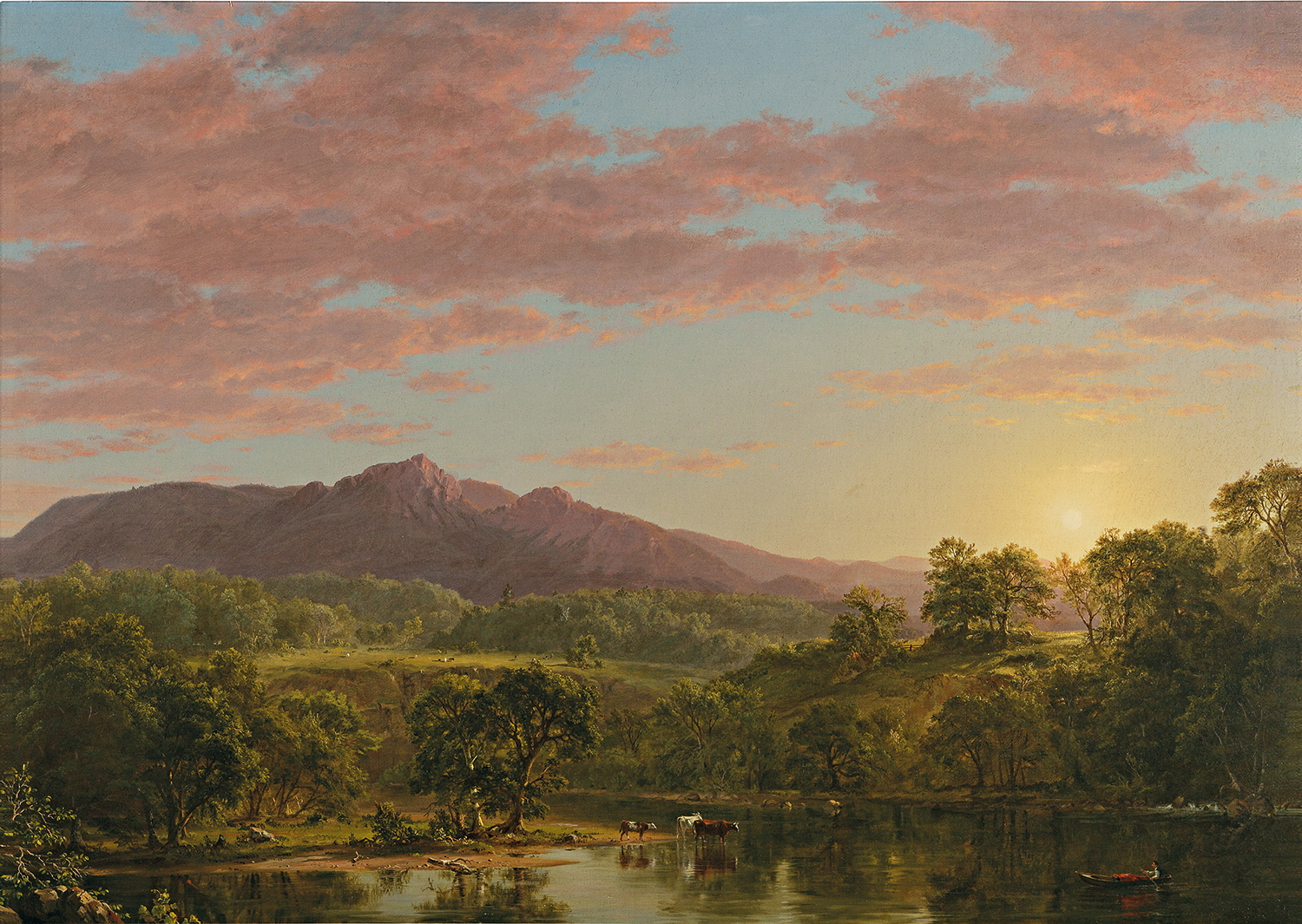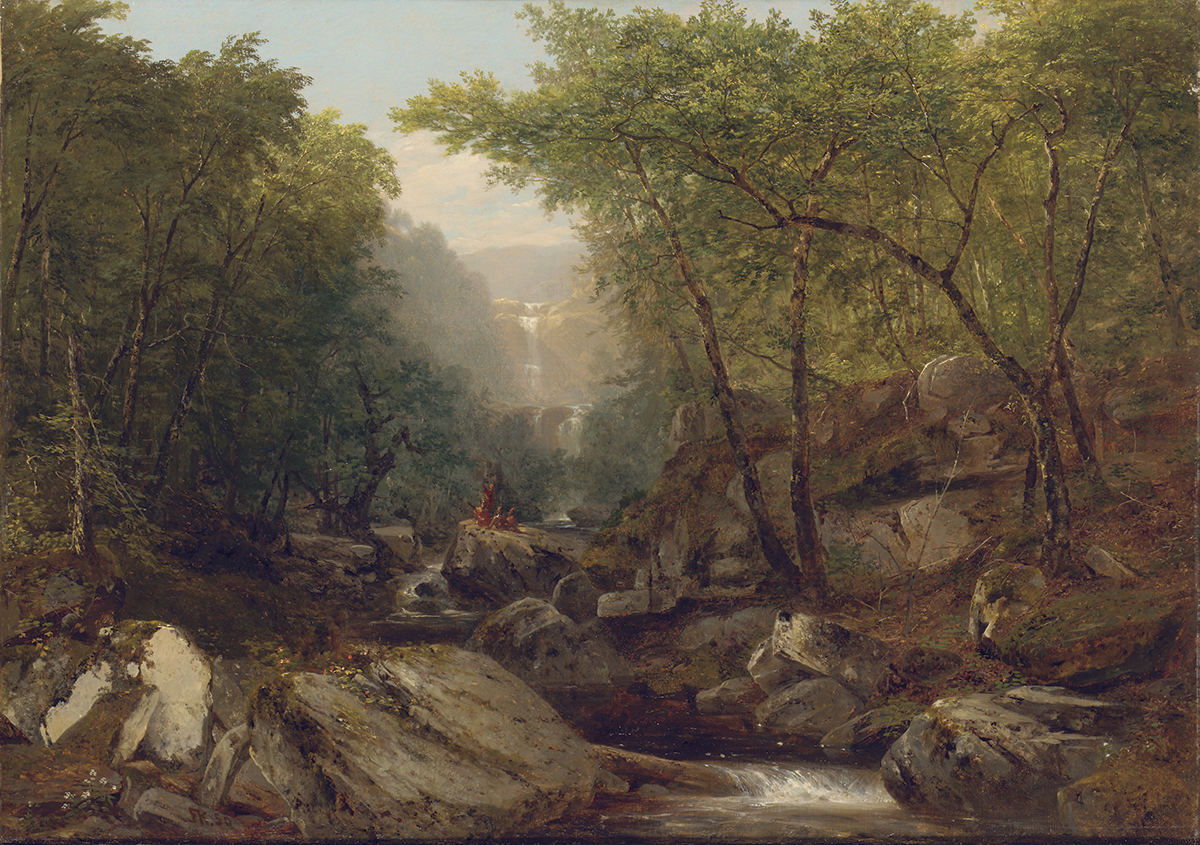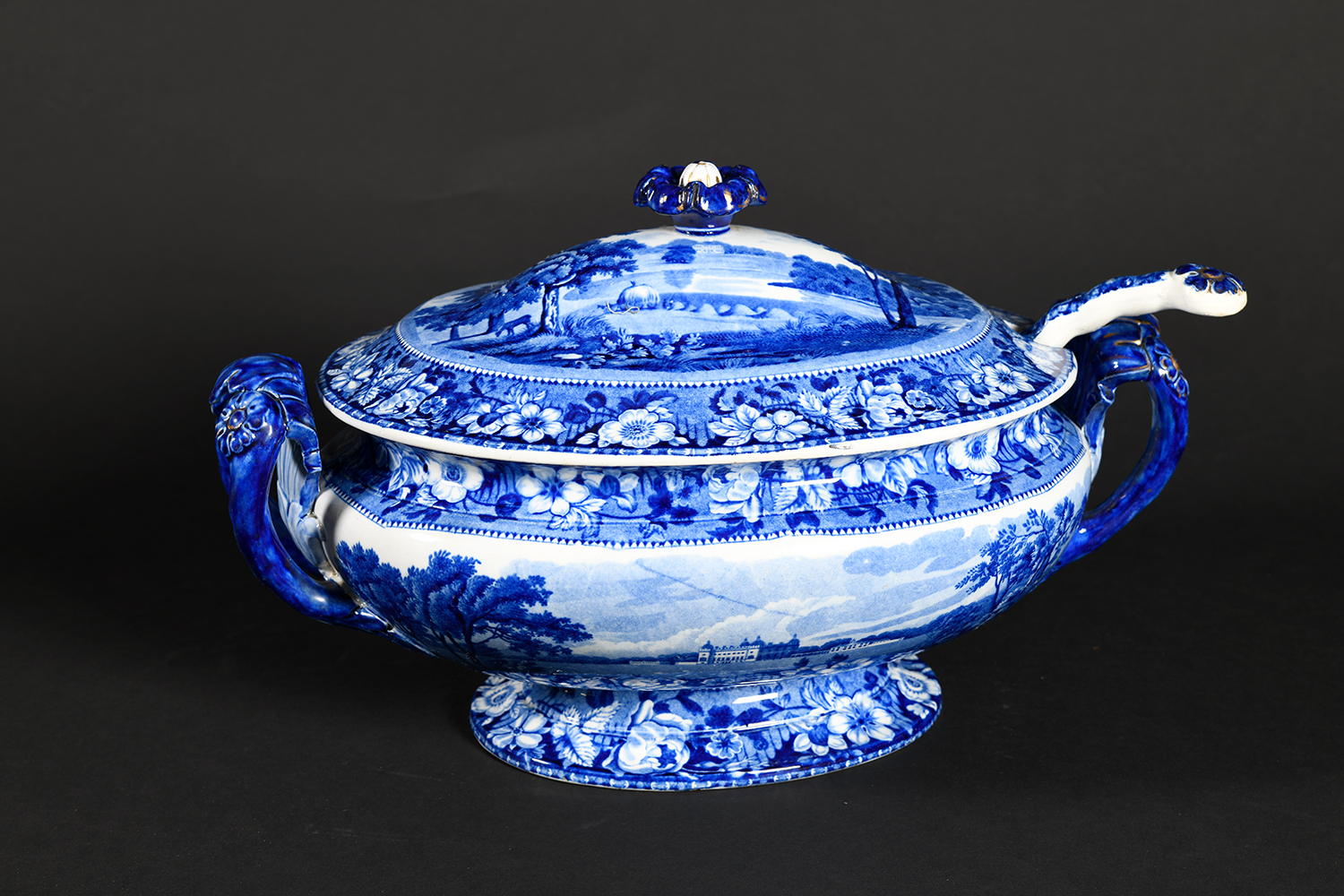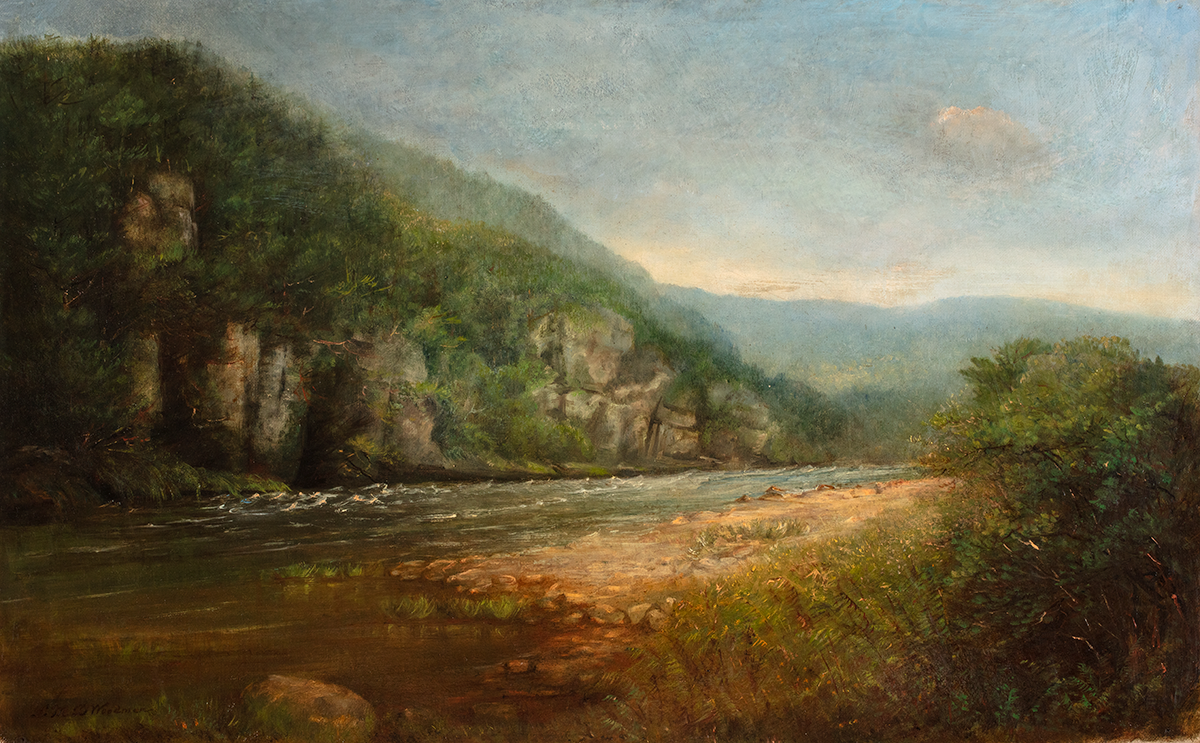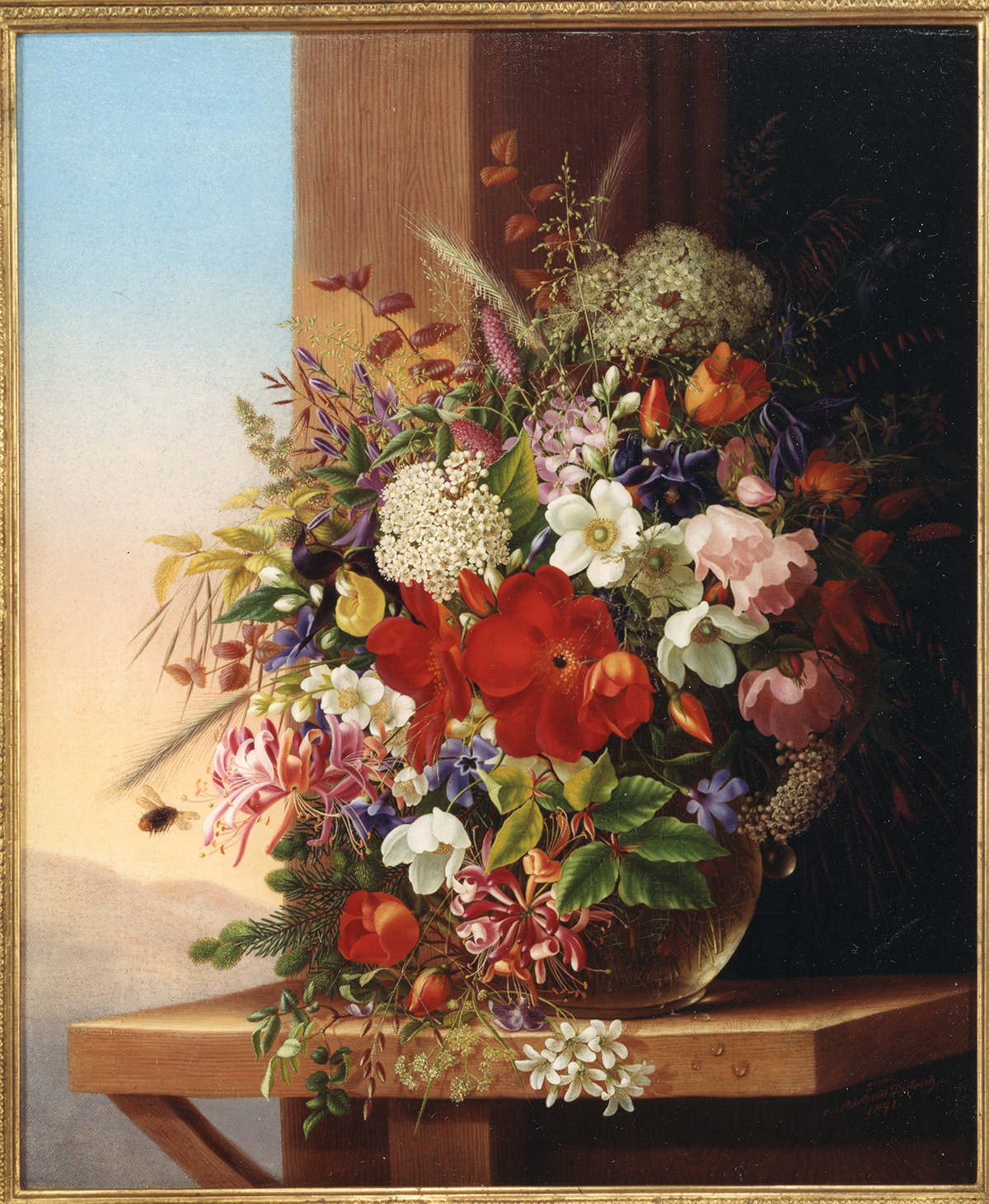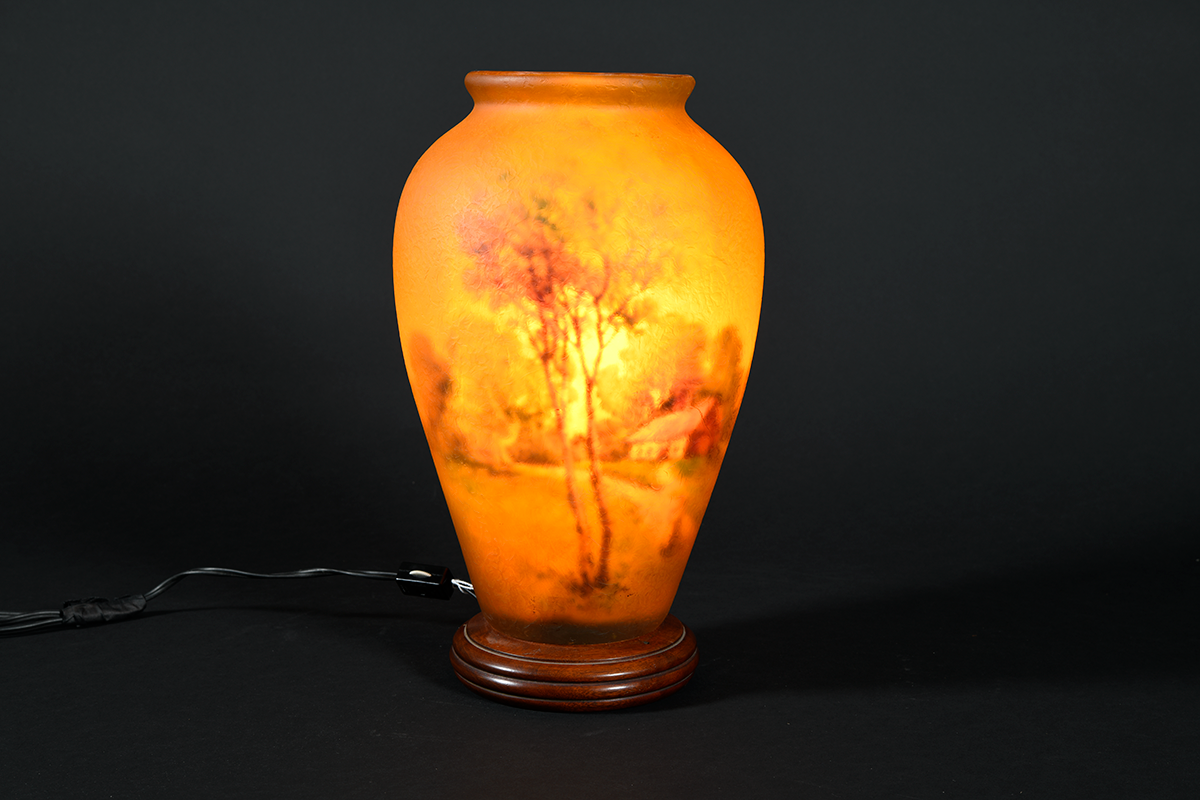Re/Framing the View: Nineteenth-Century American Landscapes
Wattles Family Gallery
Opened: October 28, 2022
Closed: May 14, 2023
CAPTION: (above) Frederic Edwin Church (American, 1826-1900), New England Lake, c. 1854. Oil on canvas, 30 x 42 in. (76.2 x 106.7 cm). Douglas and Cynthia Crocker Collection. Image courtesy of Christie’s.
Re/Framing the view will be on view at the Minnesota Marine Art Museum from October 14, 2023 - August 4, 2024
Exhibition Programs
March 21st
Wampanoag Lifeways with David Weeden
April 8th
April 20th
Reading American Landscapes: Women and the American Scene with Naomi Slipp
April 22nd
Dunham’s Brook Conservation Area Walk
May 6th
Nineteenth-century American artists are well known for their depictions of nature and the outdoors, for their commitment to creating a national “school” of painting, and for their documentation and idealization of scenery ranging from the imagined and pastoral to the dramatic and sublime.
Drawn from six regional private collections, the New Bedford Whaling Museum collection, and six strategic institutional loans, Re/Framing the View: Nineteenth-century American Landscapes includes works by Thomas Cole, the Peale family group, Thomas Eakins, William Bradford, John F. Kensett, Martin Johnson Heade, Frederic Edwin Church, Albert Bierstadt, Jasper Francis Cropsey, George Inness, Francis A. Silva, Sanford Robinson Gifford, and Edward Mitchell Bannister, among many others.
As this list suggests, the majority of US based nineteenth-century American landscape painters were men, and heading out into the wilderness to capture the scene was viewed as a masculine pursuit. A selection of objects – including china, nature studies in watercolor, and decorative arts – underscore the gendered aspects of American landscape painting by demonstrating where and how women participated in capturing American flora and fauna.
The realities of women’s opportunities in the arts are elaborated upon through paintings and prints by Fitz Henry Lane and Mary Mellen; Asher B. Durand and Lucy Maria Durand Woodman; Evelina Mount, Adelheid Dietrich, and Claude Raguet Hirst; and Mary Nimmo Moran and Ellen Day Hale.
While the exhibition celebrates the work of these artists, it also offers a layered interpretation of the cultural and historical meaning of such paintings. What such artists often failed to capture are the environmental conditions and social concerns that may underlie picturesque imagery.
The exhibition therefore aims to recast such orthodox American landscape paintings through a careful consideration of the roles women played in picturing nature – via still life, needlepoint, watercolor, and decorative arts, and the ways in which environmental degradation, Federal Native American removal policies, and racialization are either pictured or erased in American scenes.
Contemplating the paintings versus the subject matter, labels, interpretive texts, and strategic juxtapositions allows us to question what we “see” in the scene versus what we know was happening. Themes explored include the environmental and cultural violence underlying nineteenth-century American landscape painting, including manifest destiny, settler colonialism, and Native removal; material extraction and industrial expansion; agricultural development and fisheries; and global exploration and imperialist projects.
By interrogating the place of gender, race and ethnicity, as well as environment and ecology, we re/frame the view and stage meaningful conversations about historical and contemporary issues and events.
The exhibition promises to be an exciting and timely invitation to view paintings held in private hands and usually hung behind closed doors – and explore the many meanings of the American landscape, both historically to nineteenth-century viewers and today for twenty-first century audiences.
This landmark exhibition and major publication have been made possible by funding from:
The William M. Wood Foundation, Cynthia & Douglas Crocker II, Victoria & David Croll, KAM Appliances, Louis Ricciardi & Elizabeth Soares,
Mary Jean & William Blasdale, Sarah Jackson, Ann & Lloyd Macdonald, Anonymous Donor (2), Individual Contributors
Program partners include: Sippican Lands Trust; Westport Land Trust; Dartmouth Natural Resources Trust; and the Mashpee Wampanoag Tribe
